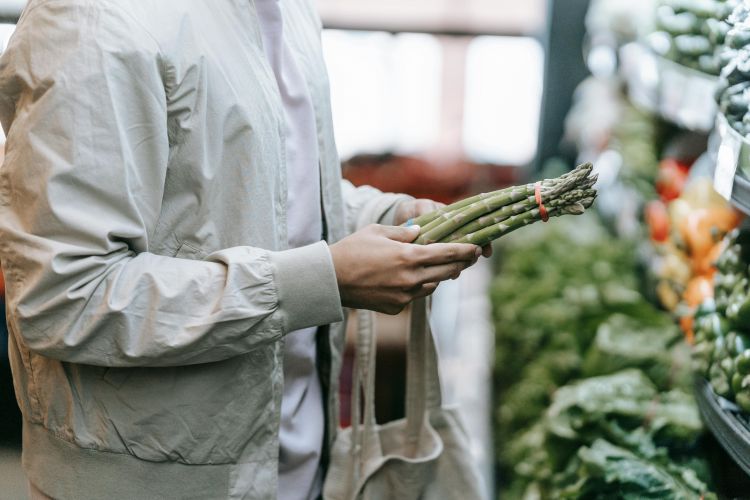Shopping to save money and eat healthy
Discover simple tips you can use at the grocery store and farmers market.

Savvy shopping and a little preparation will get you saving money and consuming less fat and fewer calories. Follow these steps to success:
- Establish your food budget
- Plan weekly meals and snacks
- Make a shopping list based on your eating plan for the week
- Shop the perimeter of the store
- Take time to read labels
Budgeting
When you're on a tight food budget it's important that you avoid buying unnecessary items. Try keeping a running shopping list of food you need to purchase and food that you need to replace. Look for coupons, sales and store specials, and sign up for store discount cards and use store apps for discounts and points.
Meal Planning
Planning meals before you shop will save time, money, and stress, while allowing you to make quick and healthy meals. Knowing the meals and snacks planned for the week in advance can help to avoid the frustration of figuring out what to eat when you and your family are hungry. Incorporate leftovers into your meal planning to save additional time and money.
Shopping List
A shopping list will help you stick to a budget. Your shopping will be faster, and you will be less likely to buy on impulse. A shopping list tells you what foods you need to purchase so you can avoid wasting time at the supermarket figuring out what to buy or thinking about what foods you and your family would like to eat. To save even more money, consider buying produce that is in season, shopping at farmer’s markets, purchasing store brands instead of name brands, buying cheaper cuts of meat, and buying day old bread products.
Healthy Store Shopping
Shopping the perimeter of the grocery store generally takes you past fresh, healthy, and less processed foods. Fruits and vegetables, low-fat dairy, lean meats, poultry and fish, and whole grain breads tend to be placed around the outside perimeter of grocery stores. Fill your shopping cart with these nutritious foods and leave less room for processed foods and sugary drinks. Highly processed and packaged foods, which are typically high in fat, salt, and sugar, tend to be in the inner aisles of the supermarket. Shop the inner aisles for specific food items such as spices, canned tomatoes, and dry beans. Stick to your list and don’t let yourself be tempted by flashy packaging.
Label Reading
Read labels to get familiar with the ingredients list and Nutrition Facts panel on packaged foods. Use this resource to compare amounts of fat, sodium, calories and nutrients in similar products. Be an informed consumer and smart shopper with regular label reading. With a quick glance you can identify foods which contain high amounts of sugar and sodium like packaged mashed potato, canned vegetables and fruit, packaged pasta entrées, white bread and cereals.



 Print
Print Email
Email

